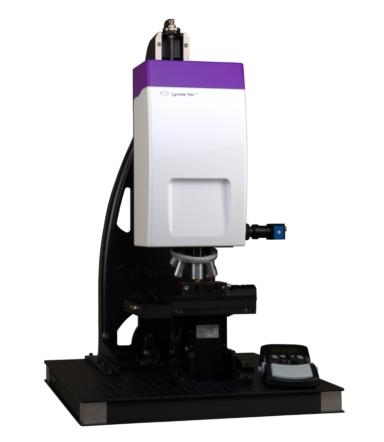Digital Holography: The Evolution of Visual Media
Digital Holography is at the forefront of next-generation imaging technology, revolutionizing the way we capture, process, and visualize three-dimensional data. Unlike traditional imaging techniques that render 2D images of 3D objects, digital holography records and reconstructs the light field of an object, enabling the creation of fully three-dimensional images. This is achieved by capturing the interference pattern of light waves reflected from the object and using this data to reconstruct the image in full 3D, often with unparalleled detail and depth.
One of the most transformative applications of digital holography is in medical imaging. By providing highly detailed 3D images of anatomical structures,it offers significant advantages over conventional 2D imaging methods, such as X-rays and MRIs. Surgeons can use holographic images to plan and practice complex procedures, gaining a more comprehensive understanding of the spatial relationships within the body. This can lead to increased precision and better patient outcomes. Additionally, digital holography is being explored for non-invasive diagnostics, where its ability to detect minute changes in tissue structure can aid in the early detection of diseases.
Beyond healthcare, digital holography is making waves in scientific research, particularly in the fields of microscopy and materials science. Holographic microscopes can visualize microscopic objects with extraordinary clarity, providing new insights into cellular processes and material properties. This can accelerate research and development in areas ranging from pharmaceuticals to nanotechnology. Furthermore, digital holography is used in metrology to measure surfaces with extreme precision, which is essential for quality control in manufacturing industries.
In the realm of entertainment and communication, digital holography promises to redefine user experiences. Holographic displays can bring to life 3D visuals that appear to float in mid-air, providing a level of immersion and interaction previously unattainable. This technology is being explored for use in live concerts, virtual reality experiences, and even holographic telepresence, where participants can communicate in 3D as if they were in the same room, despite being miles apart.
Despite its tremendous potential, digital holography faces challenges such as high computational requirements and the need for sophisticated equipment to capture and reconstruct holograms. Advances in computational power and algorithms are steadily overcoming these hurdles, making the technology more accessible and practical for a wider range of applications. Moreover, the development of portable and user-friendly holographic devices is expanding the reach of digital holography beyond specialized fields, bringing it into everyday use.
Digital Holography is at the forefront of next-generation imaging technology, revolutionizing the way we capture, process, and visualize three-dimensional data. Unlike traditional imaging techniques that render 2D images of 3D objects, digital holography records and reconstructs the light field of an object, enabling the creation of fully three-dimensional images. This is achieved by capturing the interference pattern of light waves reflected from the object and using this data to reconstruct the image in full 3D, often with unparalleled detail and depth.
One of the most transformative applications of digital holography is in medical imaging. By providing highly detailed 3D images of anatomical structures,it offers significant advantages over conventional 2D imaging methods, such as X-rays and MRIs. Surgeons can use holographic images to plan and practice complex procedures, gaining a more comprehensive understanding of the spatial relationships within the body. This can lead to increased precision and better patient outcomes. Additionally, digital holography is being explored for non-invasive diagnostics, where its ability to detect minute changes in tissue structure can aid in the early detection of diseases.
Beyond healthcare, digital holography is making waves in scientific research, particularly in the fields of microscopy and materials science. Holographic microscopes can visualize microscopic objects with extraordinary clarity, providing new insights into cellular processes and material properties. This can accelerate research and development in areas ranging from pharmaceuticals to nanotechnology. Furthermore, digital holography is used in metrology to measure surfaces with extreme precision, which is essential for quality control in manufacturing industries.
In the realm of entertainment and communication, digital holography promises to redefine user experiences. Holographic displays can bring to life 3D visuals that appear to float in mid-air, providing a level of immersion and interaction previously unattainable. This technology is being explored for use in live concerts, virtual reality experiences, and even holographic telepresence, where participants can communicate in 3D as if they were in the same room, despite being miles apart.
Despite its tremendous potential, digital holography faces challenges such as high computational requirements and the need for sophisticated equipment to capture and reconstruct holograms. Advances in computational power and algorithms are steadily overcoming these hurdles, making the technology more accessible and practical for a wider range of applications. Moreover, the development of portable and user-friendly holographic devices is expanding the reach of digital holography beyond specialized fields, bringing it into everyday use.
Digital Holography: The Evolution of Visual Media
Digital Holography is at the forefront of next-generation imaging technology, revolutionizing the way we capture, process, and visualize three-dimensional data. Unlike traditional imaging techniques that render 2D images of 3D objects, digital holography records and reconstructs the light field of an object, enabling the creation of fully three-dimensional images. This is achieved by capturing the interference pattern of light waves reflected from the object and using this data to reconstruct the image in full 3D, often with unparalleled detail and depth.
One of the most transformative applications of digital holography is in medical imaging. By providing highly detailed 3D images of anatomical structures,it offers significant advantages over conventional 2D imaging methods, such as X-rays and MRIs. Surgeons can use holographic images to plan and practice complex procedures, gaining a more comprehensive understanding of the spatial relationships within the body. This can lead to increased precision and better patient outcomes. Additionally, digital holography is being explored for non-invasive diagnostics, where its ability to detect minute changes in tissue structure can aid in the early detection of diseases.
Beyond healthcare, digital holography is making waves in scientific research, particularly in the fields of microscopy and materials science. Holographic microscopes can visualize microscopic objects with extraordinary clarity, providing new insights into cellular processes and material properties. This can accelerate research and development in areas ranging from pharmaceuticals to nanotechnology. Furthermore, digital holography is used in metrology to measure surfaces with extreme precision, which is essential for quality control in manufacturing industries.
In the realm of entertainment and communication, digital holography promises to redefine user experiences. Holographic displays can bring to life 3D visuals that appear to float in mid-air, providing a level of immersion and interaction previously unattainable. This technology is being explored for use in live concerts, virtual reality experiences, and even holographic telepresence, where participants can communicate in 3D as if they were in the same room, despite being miles apart.
Despite its tremendous potential, digital holography faces challenges such as high computational requirements and the need for sophisticated equipment to capture and reconstruct holograms. Advances in computational power and algorithms are steadily overcoming these hurdles, making the technology more accessible and practical for a wider range of applications. Moreover, the development of portable and user-friendly holographic devices is expanding the reach of digital holography beyond specialized fields, bringing it into everyday use.
0 Comments
0 Shares






